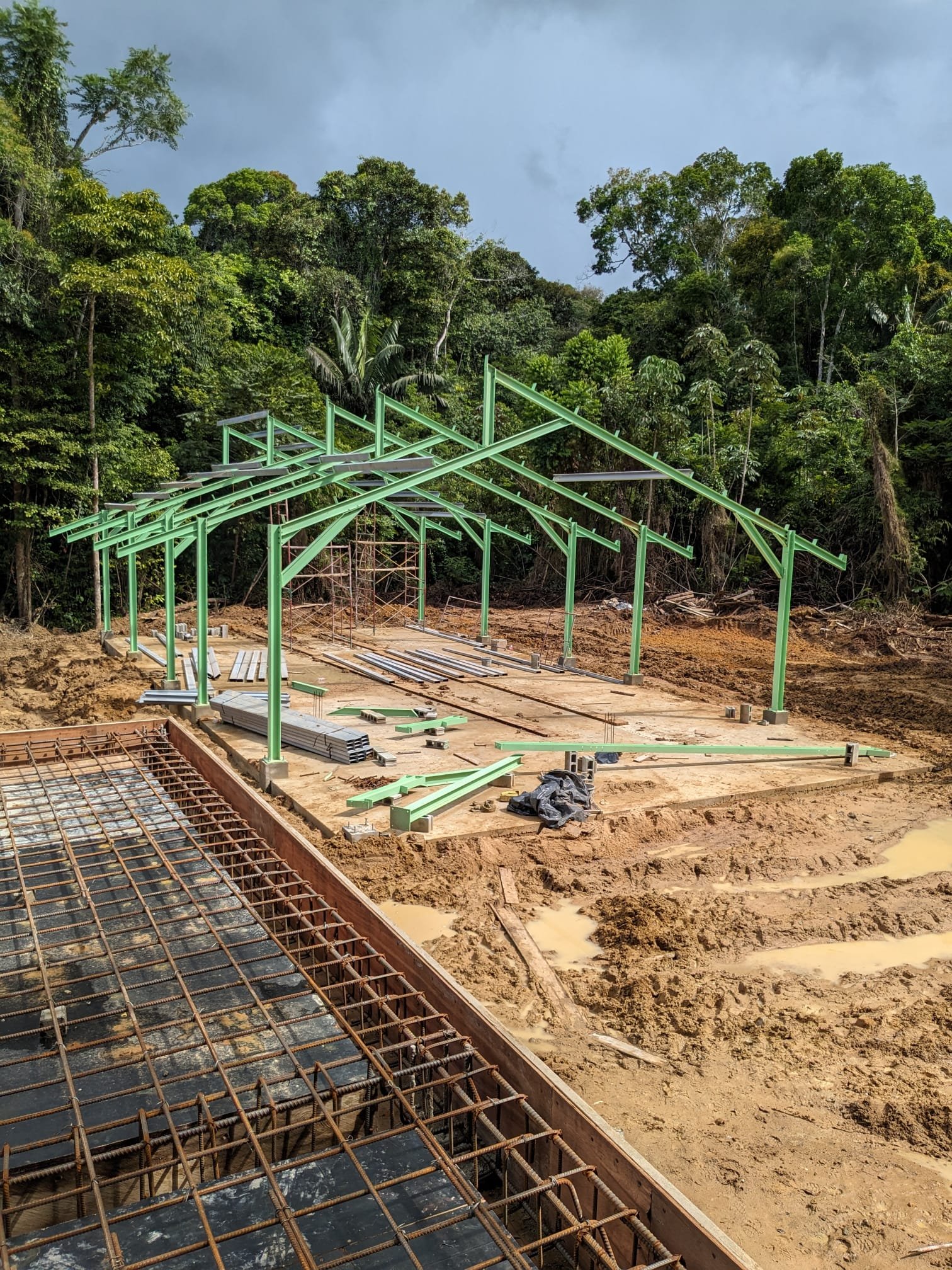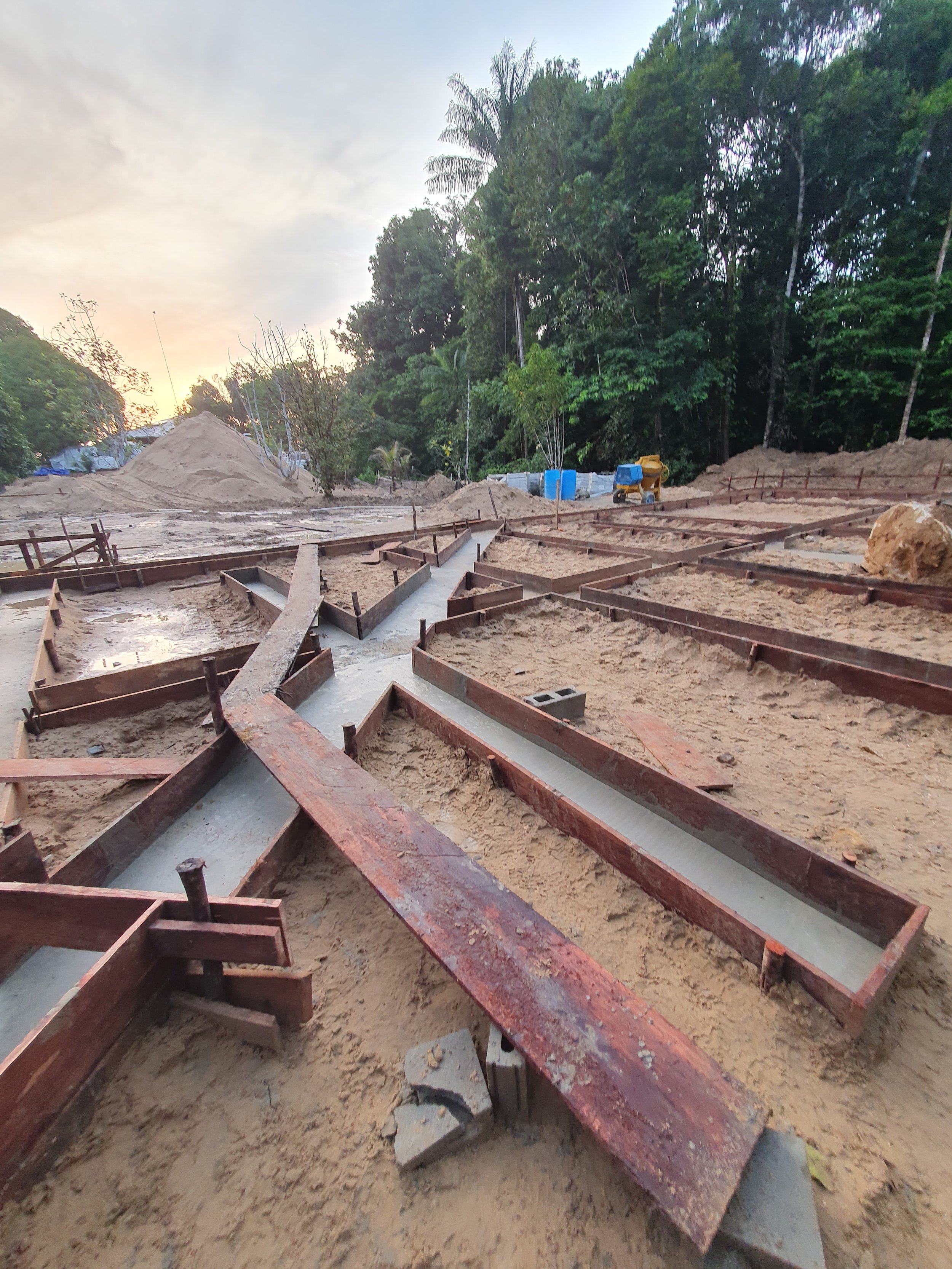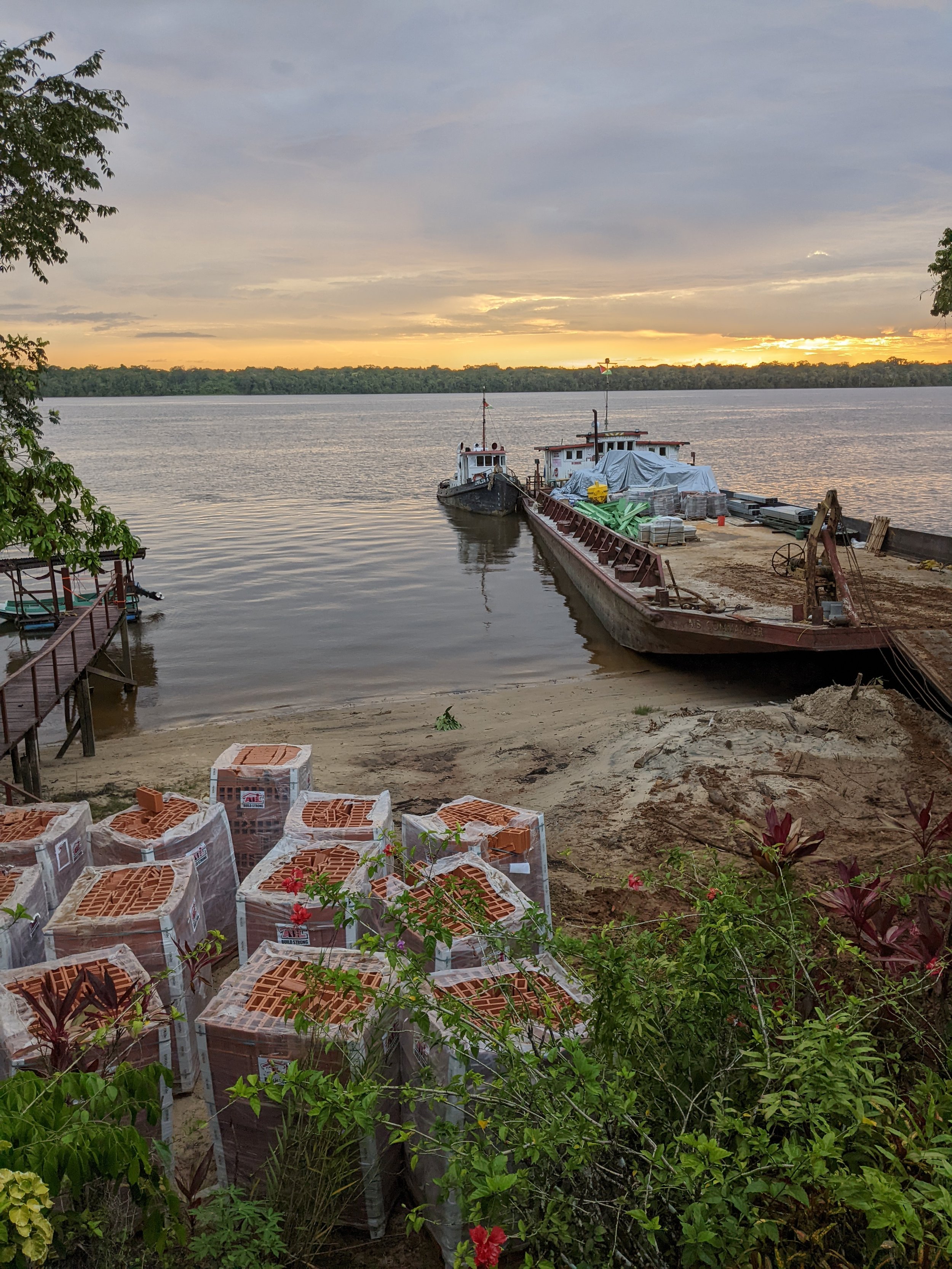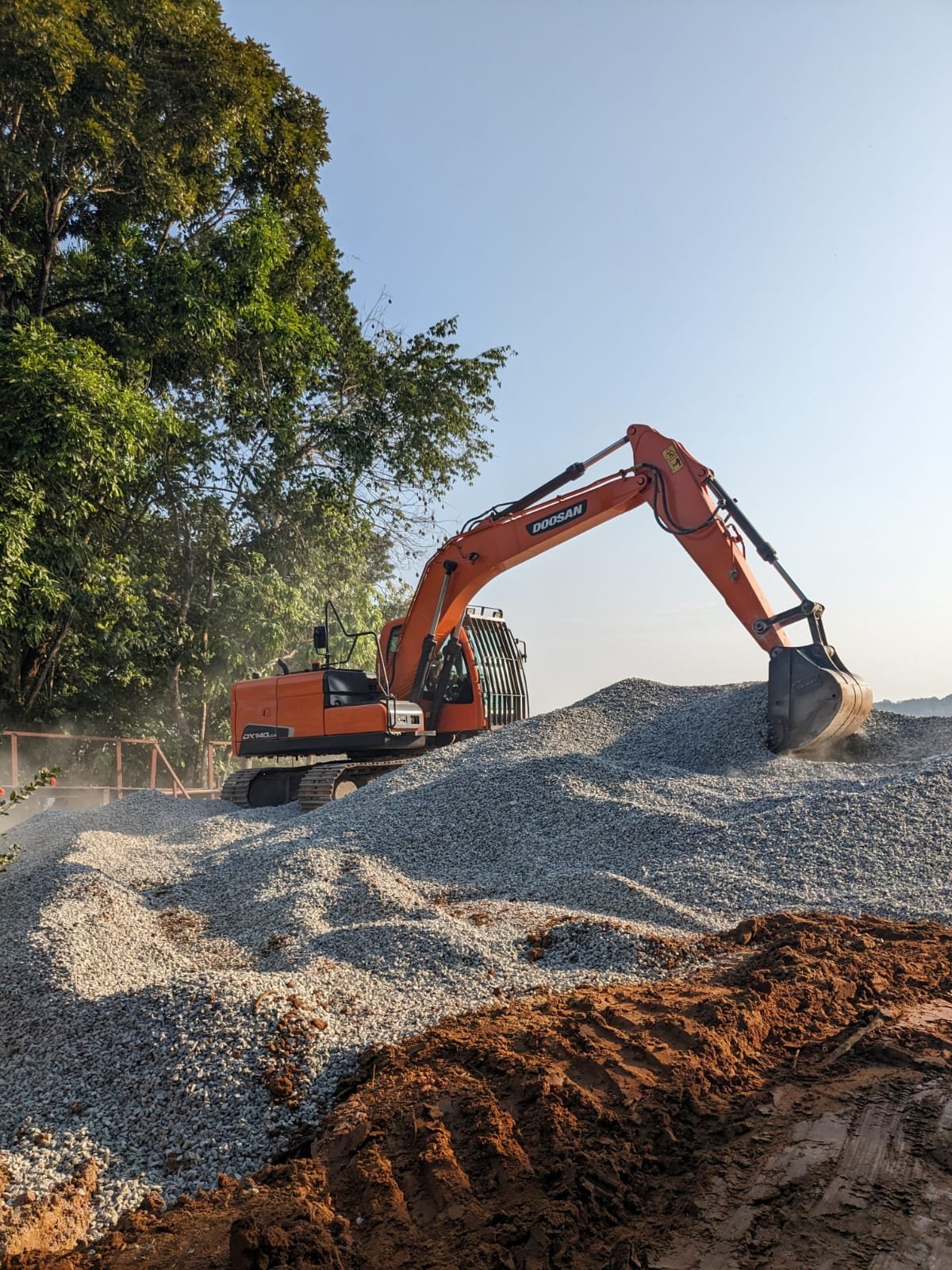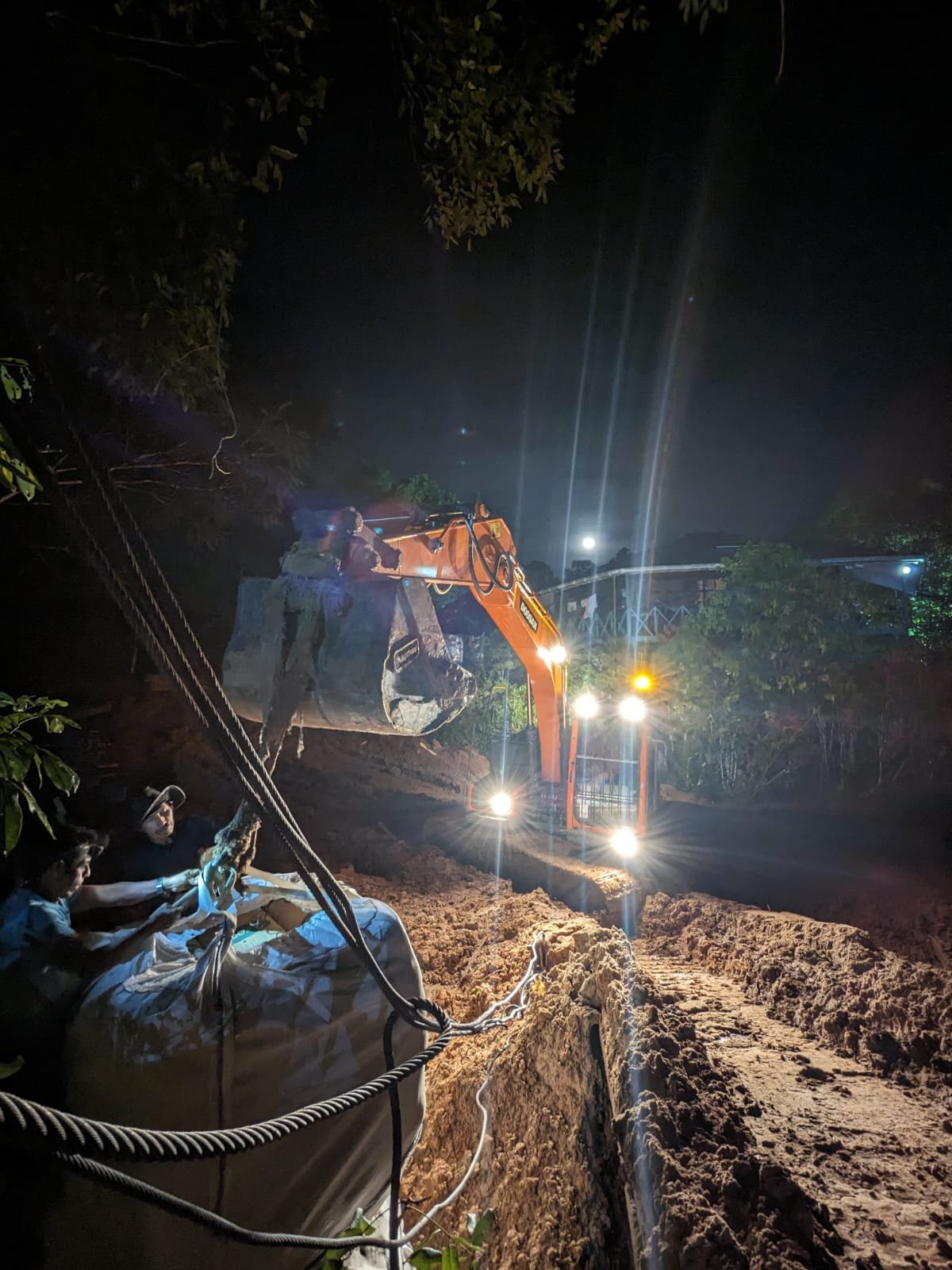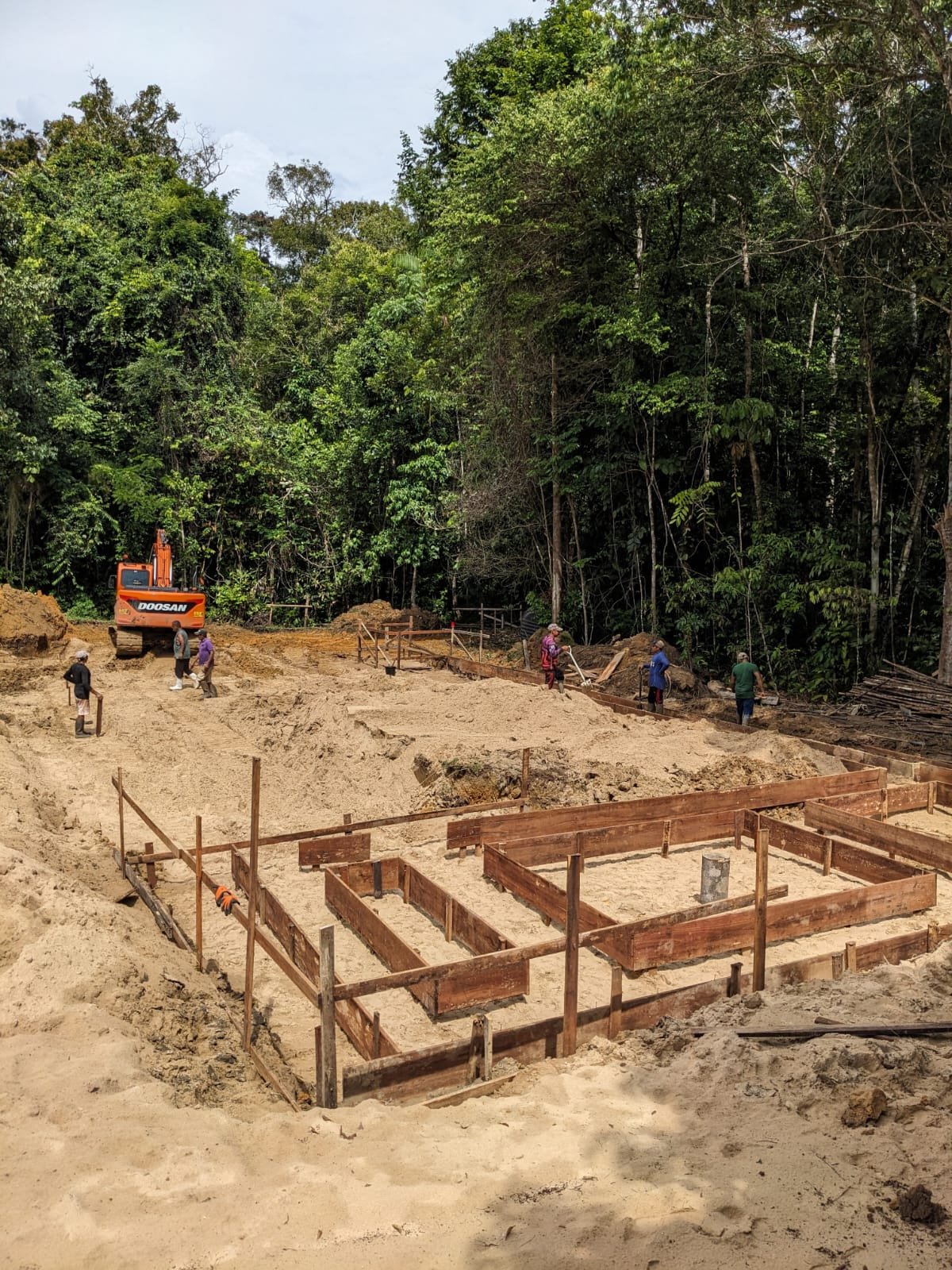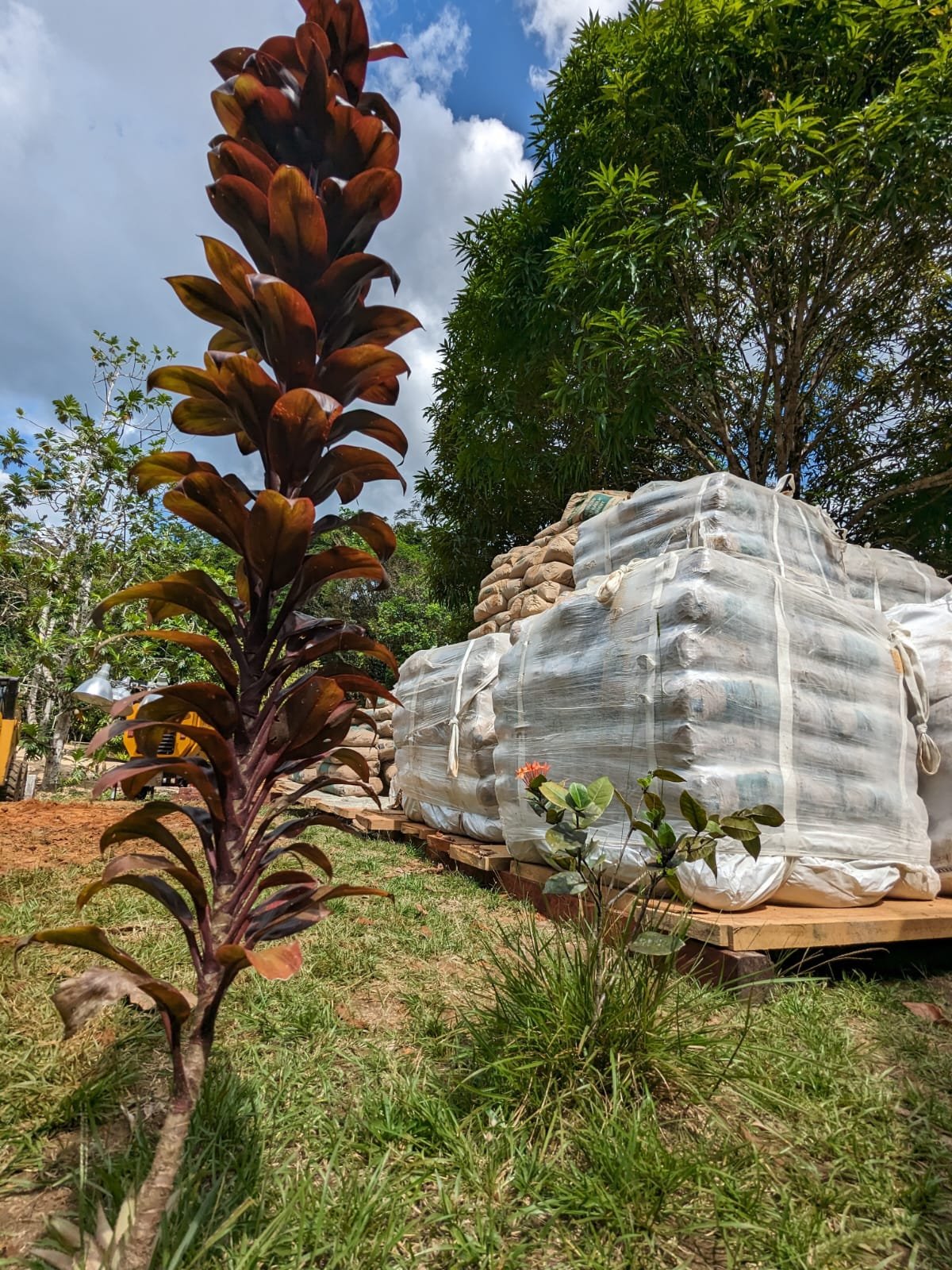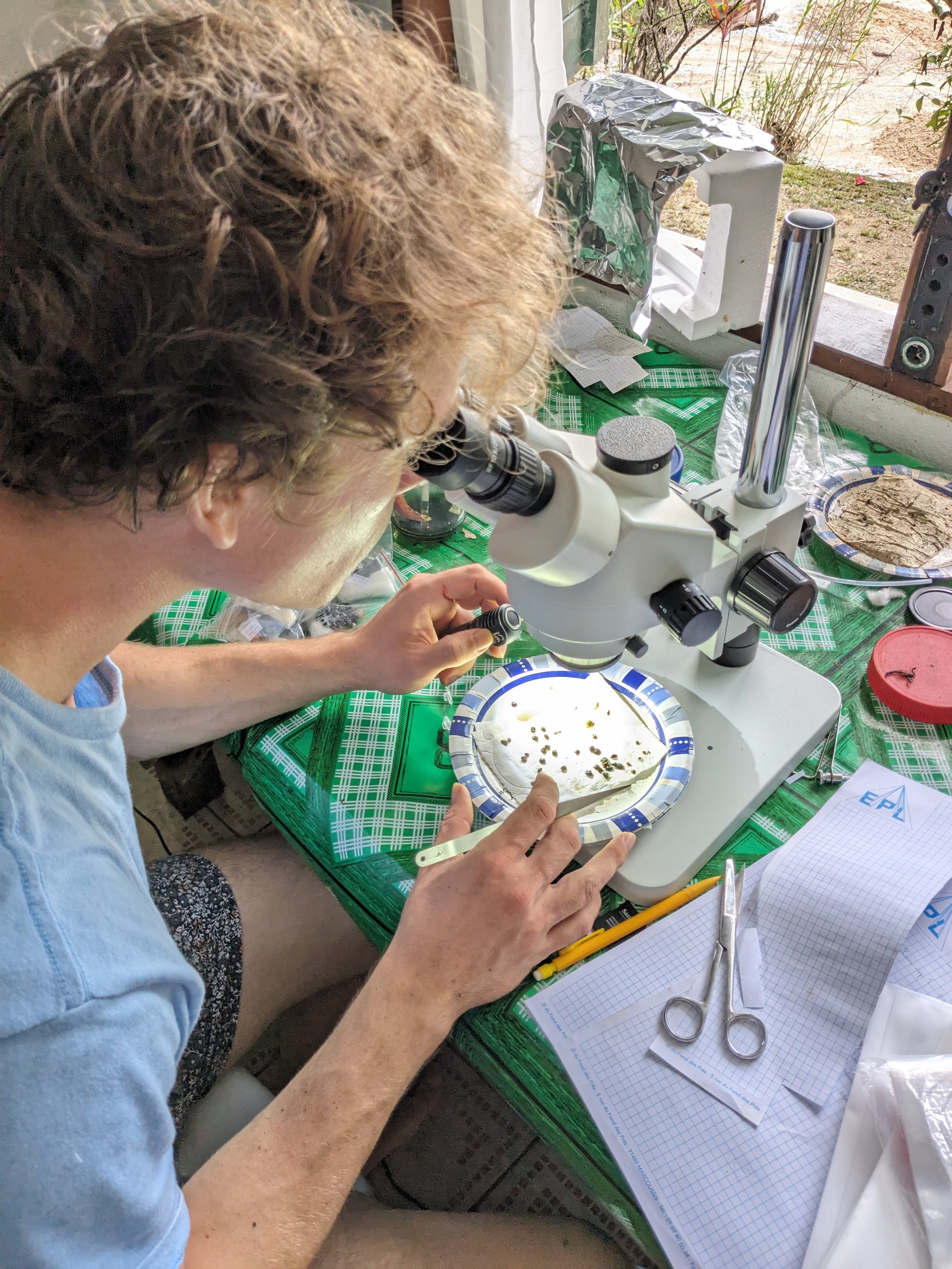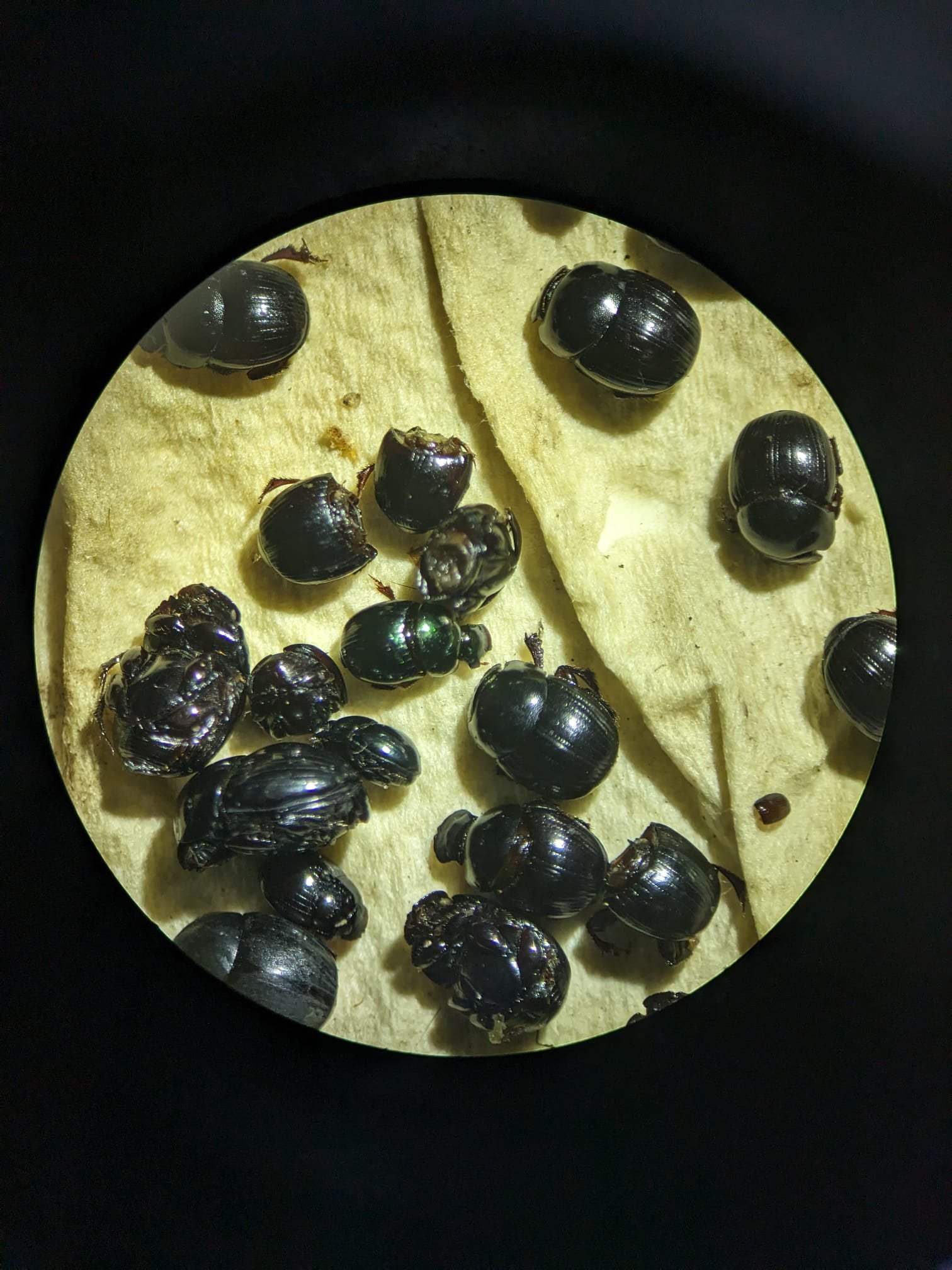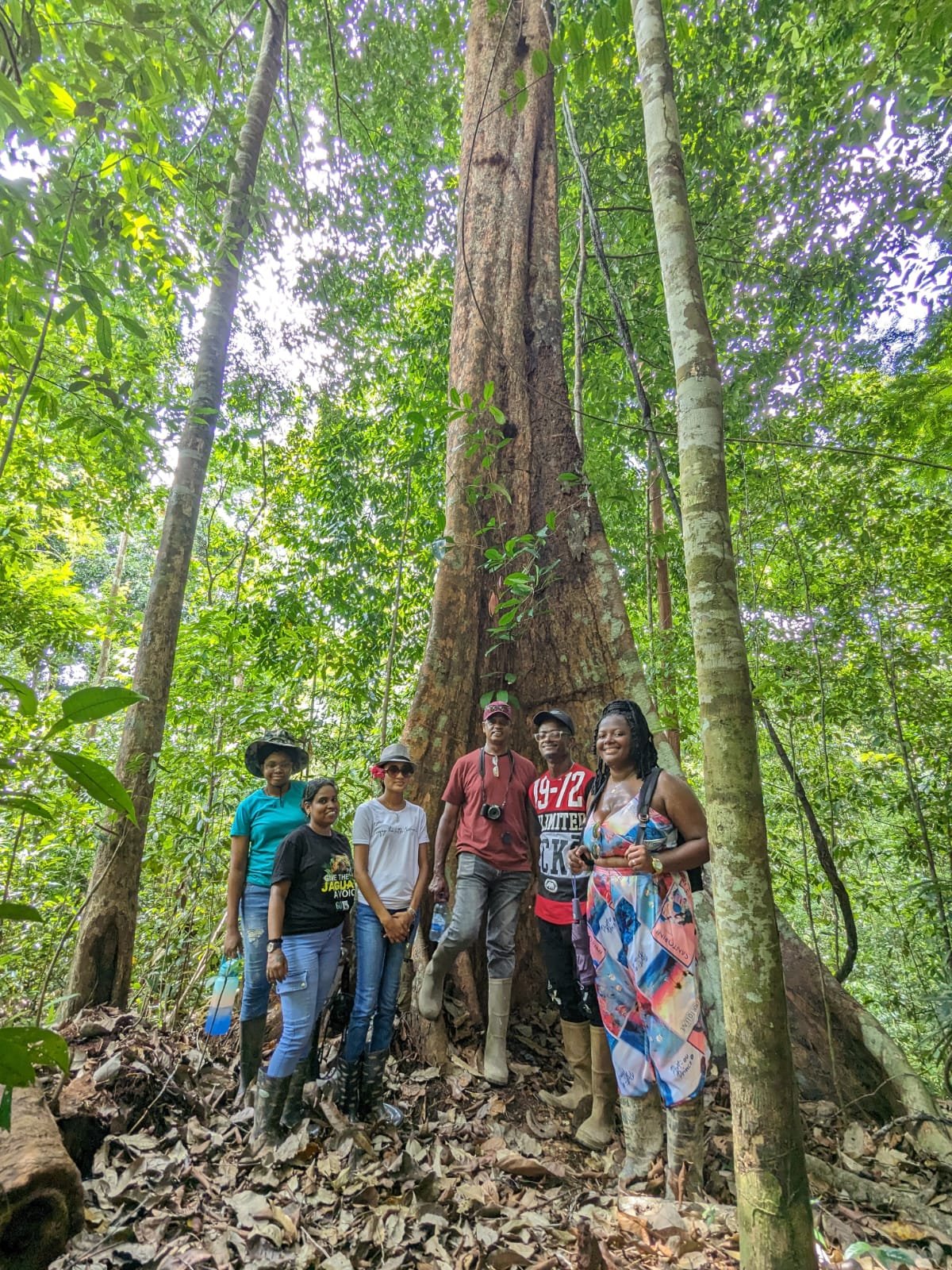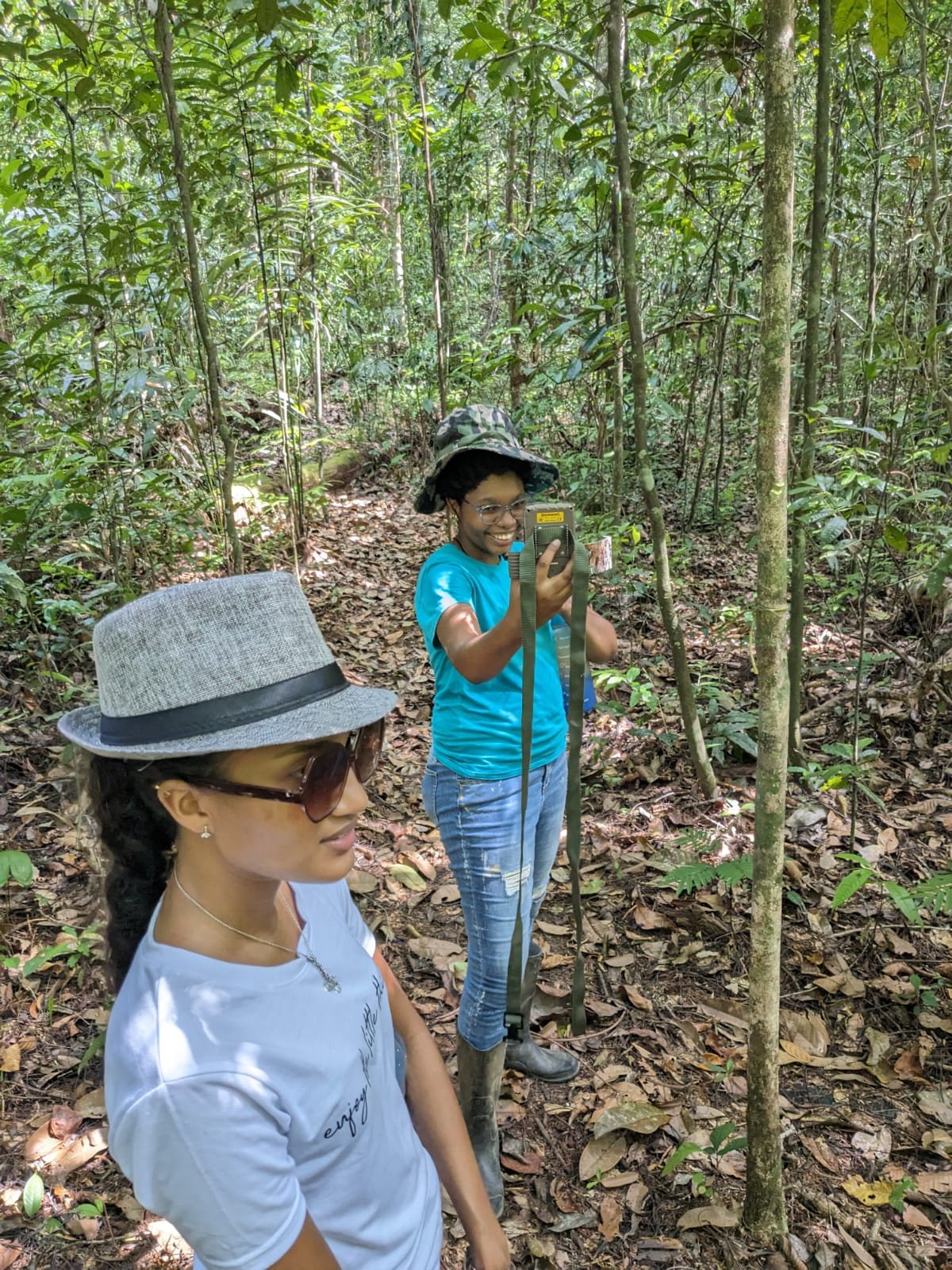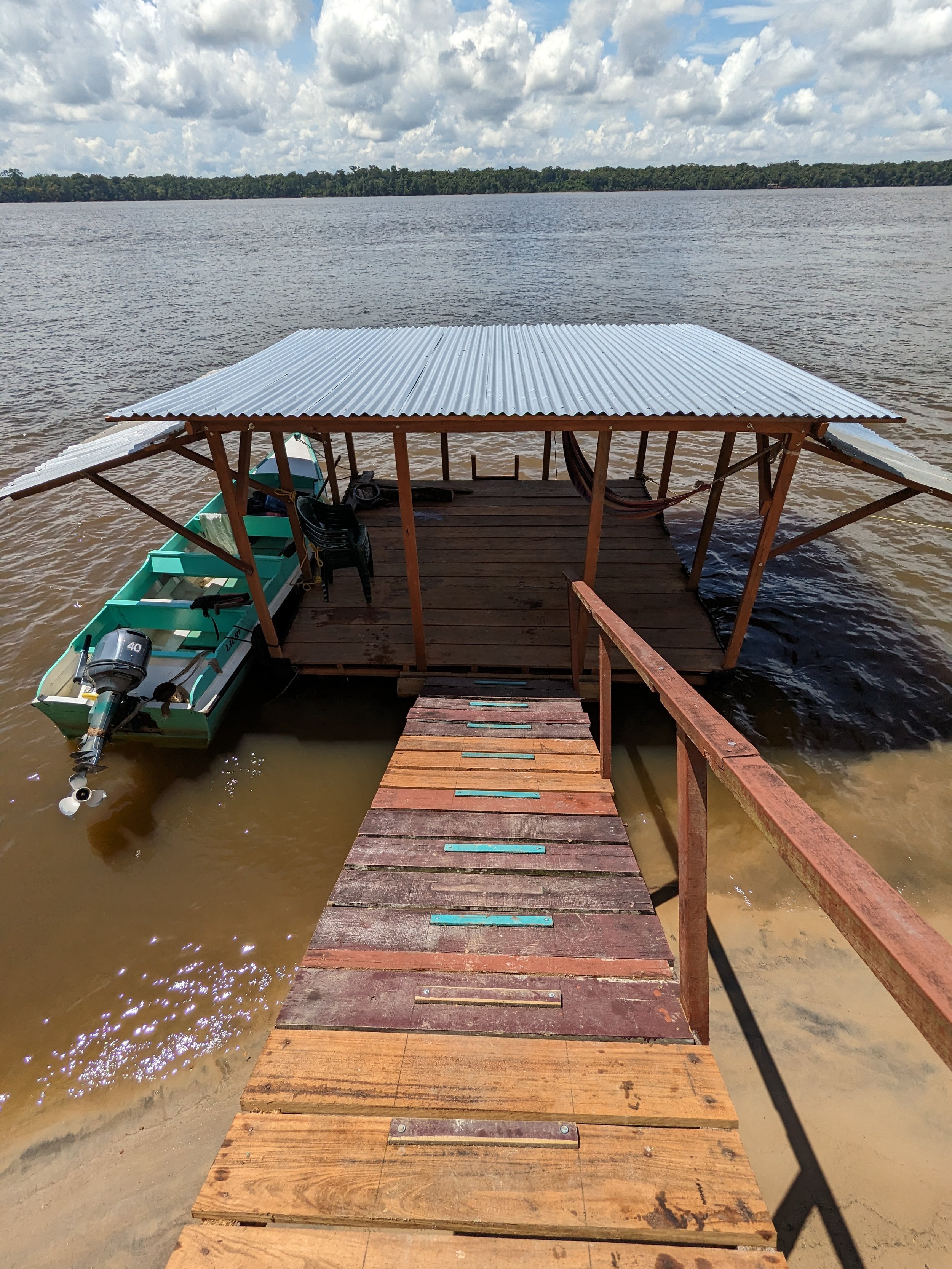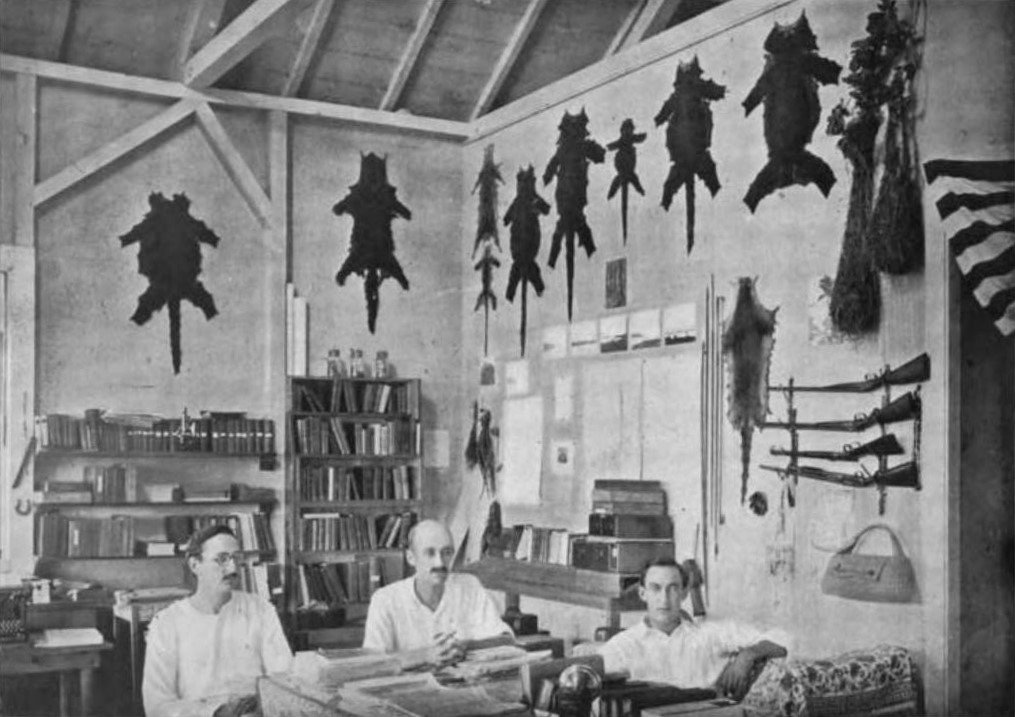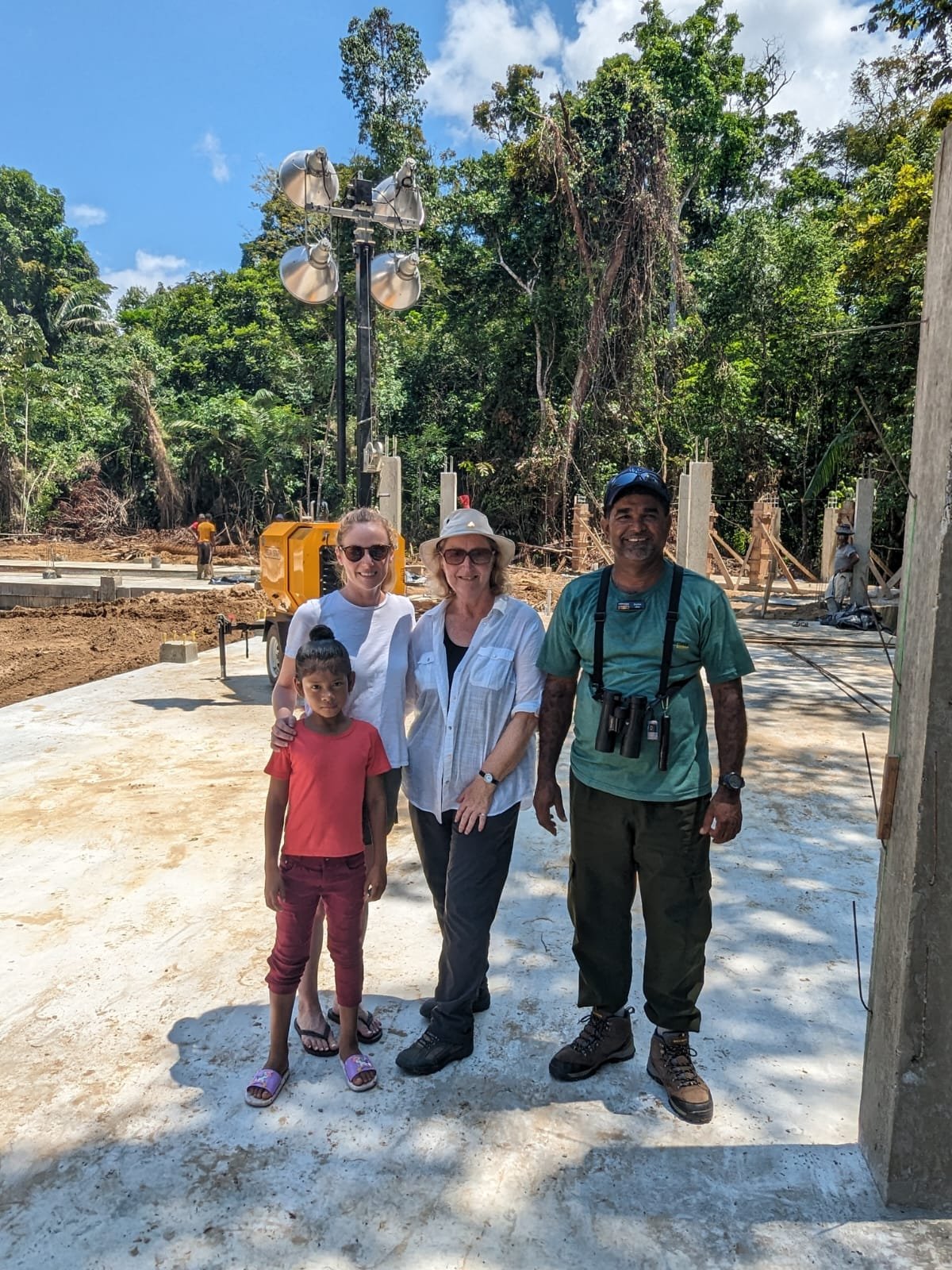November 2023
Sophia Point’s new centre begins to take shape
After years of planning, fundraising and design we are excited to see the construction work progress in earnest on the Sophia Point Rainforest Research Centre! Following our successful sod turning event in August, contractor Indar Ramllall and his team of workers have been busy realizing architect Marcel Gaskin’s design.
After preparing the ground, establishing foundations and casting the concrete base on which the building will be built, we are now moving to erect our pre-fabricated steel structure. The team is working to get the roof on before the worst of the rainy season so the internal work can continue undisturbed. Workers from our neighbouring River’s View community make up the majority of the team on site and we have been able to source many of our materials locally including wood, sand and stone. We hope to complete the building work by early next year, and to be able to welcome new students to access and learn from the incredible rainforest surrounding us.
The drone shot on page 1 was taken by visiting researcher, Jean Hercé, and gives a great view of the site from above. You can see the efforts we have taken to ensure the design fits into the existing clearing, reducing our need to remove trees. The team have worked hard to consider how this construction can minimise its negative footprint on the surrounding environment. For weekly updates on construction, follow our social media accounts. Links below!
Insect scientist studies over 5,000 beetles
It was great to welcome back insect enthusiast Jean Hercé to Sophia Point. He spent two weeks identifying over 5,500 individual dung beetles during his second visit to the site. Jean is working with PhD student Sean Glynn who is studying the impact of gold mining on biodiversity in the region, using dung beetles as indicators for environmental health. Jean completed the mammoth task of identifying thousands of individual beetles (some as small as a few millimetres!) from sites local to Sophia Point, using our new stereo microscope. We look forward to reading the results of Sean and Jean’s work.
University of Guyana alumni day visit
We recently hosted a group of University of Guyana staff and alumni for a day visit to Sophia Point. Centre Director Sam Airey took the group on a forest trail walk where they learnt to set and check camera traps, in addition to a tour of the building site. The group even managed to squeeze in a quick kayak on the Essequibo river before returning to Georgetown. Check out what they caught on camera below!
Spotted at Sophia Point!
Despite the construction noise, the team are delighted that our cameras continue to capture amazing shots of wildlife just minutes walk away from the site. This big cat, Puma concolor, was captured on a trail camera set by our University of Guyana visitors. Click on the button below to watch the video!
Old jetty repaired and improved
We have a new jetty! After almost 10 years of service we have replaced the old floating jetty. Due to rough water and rotting wood the old bridge and floating pontoon had become unsafe and unfit for purpose. So Director Sam Airey, along with a team of local River’s View builders used locally sourced wood to construct a new and improved pontoon. The revised structure is more stable, it will allow for multiple boats to dock and to offload, and it will support larger visiting groups once the centre is complete. We have also improved safety with an access ladder and life ring on the pontoon. It is now a wonderful spot to catch the sunset and breeze in the hammock after a long day’s work.
William Beebe: a pioneer of tropical ecology in Guyana
Everyone knows the name of Charles Darwin, but naturalist William Beebe is less well known. Despite this he is regarded as one of the founding scientists of field ecology, revolutionizing the approach to the long term study of tropical environments. In 1916, Beebe, with the support of US President Theodore Roosevelt, established in Guyana one of the world’s first tropical field stations, Kalacoon House, located just 10 miles from Sophia Point! As a pioneering naturalist, Beebe’s novel approach to forensic, long term ecological research set the model on which countless field stations across the tropics are now based.
We were delighted when Carey Bamford, whose great grandparents lived at Kalacoon and supported and hosted Beebe’s scientific work, came to visit us at Sophia Point. After a trip to the former location of Kalacoon, she spent an afternoon with us sharing photographs and stories of her great grandparents' lives in Guyana, including an account of when President Roosevelt and his wife came for dinner at her great grandparent’s house in Kalacoon in 1916.
More than 100 years after Beebe’s work in Guyana, and less than 30 minutes away from one of the world’s first tropical field stations, Sophia Point will provide the facilities to once again explore and study this unique environment. This time providing access for young Guyanese to become the pioneering naturalists of tomorrow!
Theodore Roosevelt at dinner with William Beebe and Carey Bamford’s great grandparents (left)
William Beebe at Kalaccon House (below)
Carey Bamford visiting the Sophia Point site (bottom two photos)


